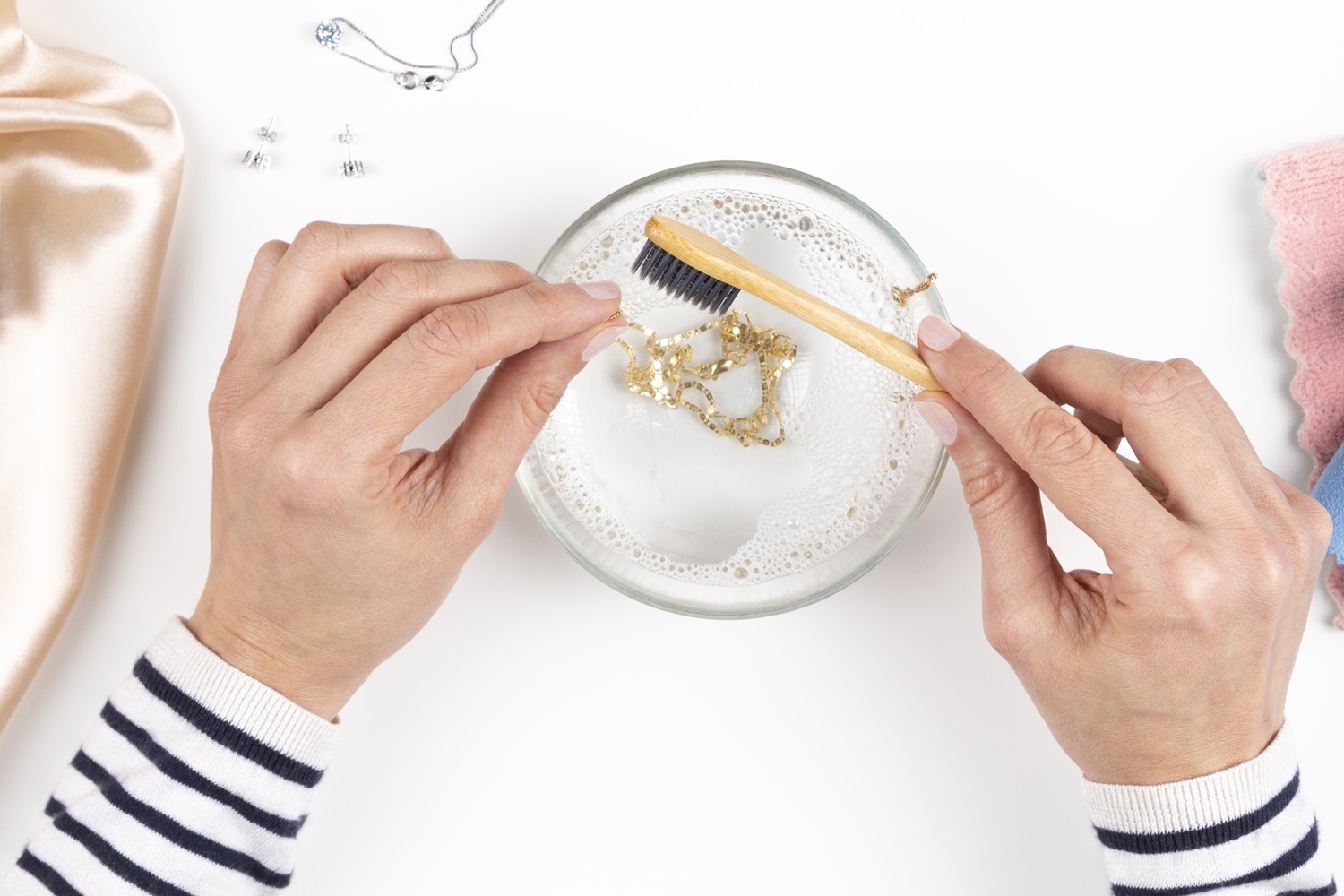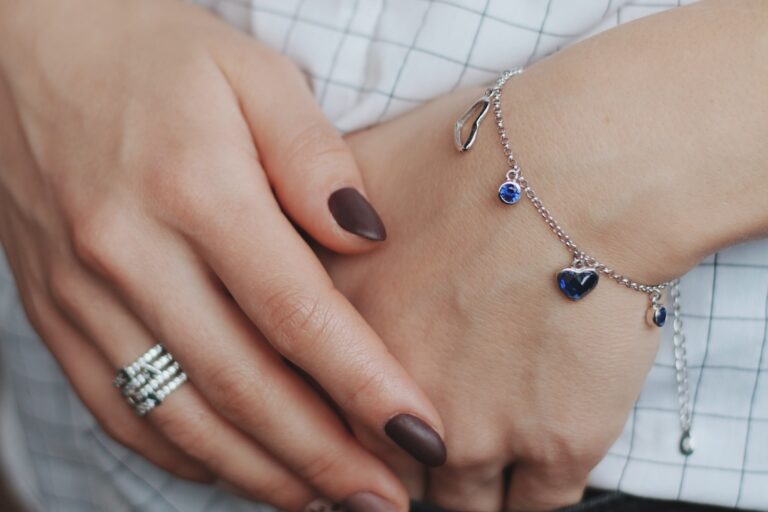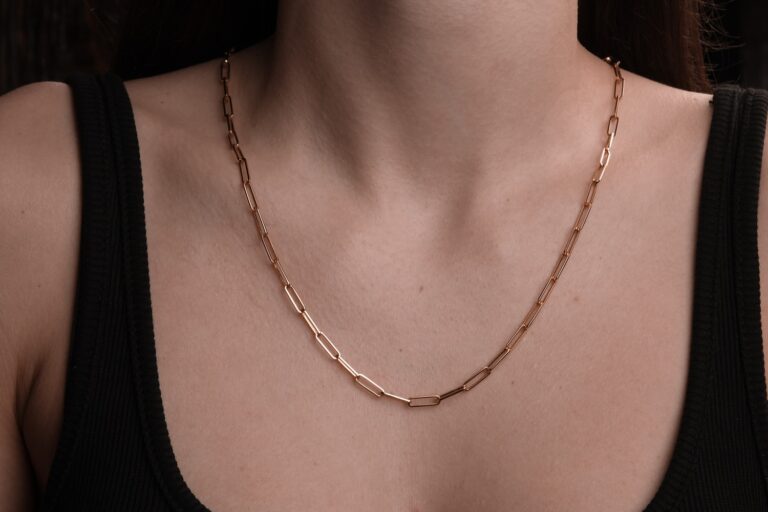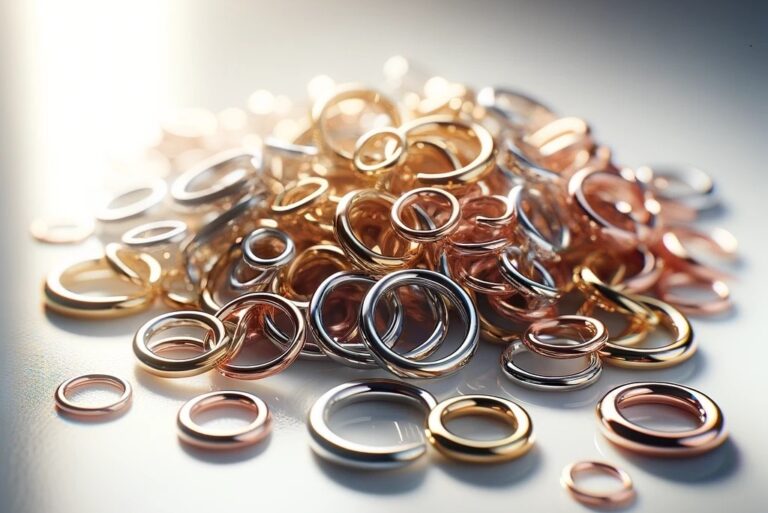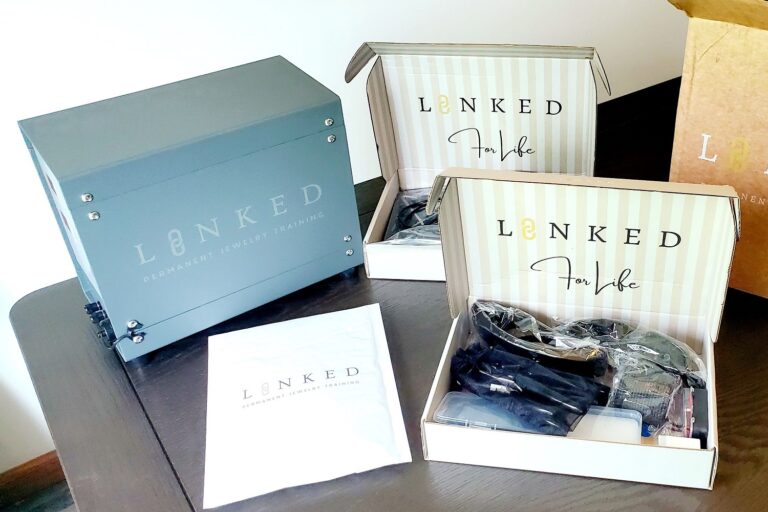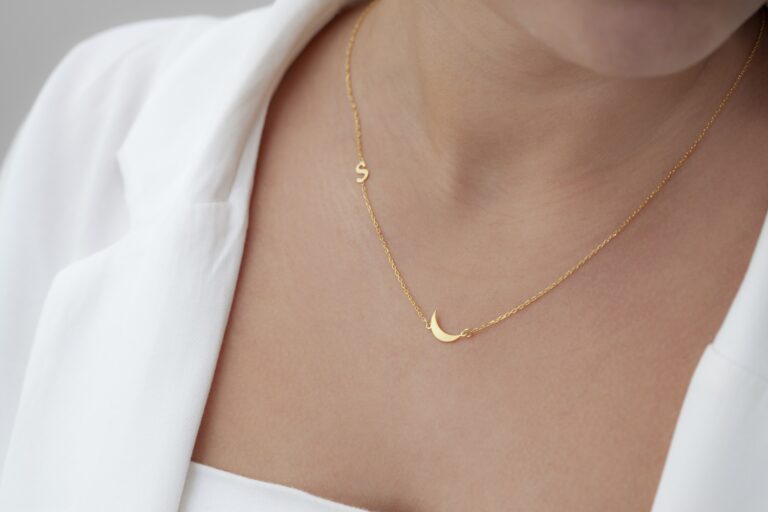Will Permanent Jewelry Tarnish? (Here’s What You Can Do)
Permanent jewelry is a beautiful expression of style and individuality, capturing moments and memories in something tangible that lasts. Unlike traditional jewelry, which you can take off, permanent jewelry is welded together, creating a seamless piece that’s meant to be worn indefinitely.
But with the permanence of such pieces comes a question many of us wonder: Will permanent jewelry tarnish over time? The short answer is yes. The long answer is, don’t get confused between a little tarnish buildup and plating scratching off to expose the base metals.
Even permanent jewelry artists have to clean and properly store the chains they keep in stock, so understanding the full picture will help you maintain your jewelry and keep it shiny and beautiful.
We foster relationships with brands we use and trust. The testimonials on our site represent real experiences, but they don't guarantee you'll achieve similar results. When you make purchases through our links to our partners, we may earn a commission. Your support helps us continue this work. You can read our full disclosure here.
Understanding Metal and Jewelry (Permanent or Clasped)
Permanent jewelry isn’t physically indestructible or immune to the laws of chemistry and physics. It is a piece of jewelry, such as a bracelet, anklet, or necklace, that is closed with a weld rather than a clasp, symbolizing a commitment or a special memory.
But like any special piece you wear, permanent jewelry can become dirty and even tarnished. Because it’s meant to be worn continuously, choosing the right metal is crucial. This will determine whether your jewelry can be brought back to its original shine.
The High quality Metals That Make the Cut
The most common metals used in permanent jewelry are 14k gold, gold filled, sterling silver, and stainless steel. Each of these metals brings something unique to the table in terms of appearance, durability, and price point.
- 14k Gold: A popular choice for its balance of purity and strength. While pure 24k gold does not tarnish, it is too weak and mailable to be used as permanent jewelry. But on the other hand, the alloy metals in 14k gold can tarnish. This simply requires some cleaning and touchups.
- Gold Filled: Offers a thick layer of gold bonded to a base metal. It’s more resistant to tarnishing than other metals and is a cost-effective alternative to solid gold.
- Sterling Silver: Known for its bright luster, sterling silver does tarnish when exposed to air and moisture but can be easily polished back to its original shine. Wearing sterling silver permanently can in many ways lead to less tarnishing as the body’s natural oils can help keep it shiny and polished.
- Stainless Steel: Highly durable and stands strong against tarnish, thanks to its protective layer of chromium oxide. It’s a great option for those looking for longevity and minimal maintenance. Since it is not a precious metal, stainless steel options are typically less expensive yet stand the test of time.
Metals to Avoid
When it comes to permanent jewelry, steer clear of costume jewelry, plated metals, copper, and unknown metal alloys. These materials are more susceptible to wear, tarnishing, and potential skin irritation over time. The longevity and appearance of your jewelry can be compromised, making them less than ideal for a piece meant to last.
Tarnishing Versus Scratching
Tarnish and the exposure of base metal through scratching are two distinct phenomena that can affect the appearance and integrity of permanent jewelry, yet they stem from different causes.
What is Tarnish?
Tarnish is a chemical reaction that occurs on the surface of some metals, leading to a dulling, discoloration, or even a blackened appearance. It is most commonly seen in metals like silver, which reacts with sulfur compounds in the air to form silver sulfide, the dark substance we recognize as tarnish. Gold and gold-filled items can also experience tarnish, though less frequently, due to their composition and the alloys mixed with the gold. Tarnish does not indicate poor quality; it’s a natural process that can often be reversed through proper cleaning methods.
What is Base Metal Exposure?
On the other hand, scratching that exposes the base metal is a physical alteration of the jewelry’s surface. This type of damage typically occurs in plated jewelry, where a thin layer of precious metal (like gold or silver) is applied over a less expensive base metal (such as copper, brass, or nickel). When the outer layer is scratched, it reveals the underlying metal, which can drastically alter the piece’s appearance and cannot be reversed by simple cleaning. Unlike tarnish, this exposure of the base metal suggests a breach in the jewelry’s protective outer layer, leading to potential issues with corrosion, further discoloration, and sensitivity reactions.
Related: Is Permanent Jewelry Worth It? A Busy Mom’s Perspective
My Permanent Jewelry Has Tarnished: What Can I Do?
Waking up to find that your once-shiny permanent jewelry has tarnished can be discouraging, especially when it symbolizes something special, not to mention costing a pretty penny. But don’t worry—tarnish doesn’t spell the end for your permanent pieces. Here are a few things you can do to remedy the situation:
1. Reach Out to Your Jewelry Artist
The first step in addressing tarnish is to contact the artist who welded your jewelry. They’re your best resource for understanding the specifics of your piece, including the type of metal used and its care requirements.
Your artist has hands-on experience with the material and may offer valuable insights into maintaining its luster or even propose solutions for the tarnish. In some cases, if the tarnish results from a quality issue with the chain’s supplier, your artist might offer to correct the issue at no extra cost.
Related: How to Start a Permanent Jewelry Business
2. Clean Your Jewelry
Often, the simplest solution to tarnish is a thorough cleaning. Before you start, it’s essential to determine the metal type in order to choose the most suitable cleaning method. For most metals, a gentle wash with warm soapy water and a soft-bristled brush can work wonders. Ensure to dry it thoroughly afterward.
- Gold and Gold Filled: Mix a bit of mild dish soap with warm water. Soak your jewelry for a few minutes, then gently scrub with a soft-bristled brush. Rinse under warm water and dry with a soft cloth.
- Sterling Silver: Use a special silver polish cloth or make a paste with baking soda and water. Apply gently with a soft cloth, rinse, and dry.
- Stainless Steel: Soapy water and a soft cloth can do the trick.
3. Acquire Professional Cleaning
If home methods don’t restore the shine to your permanent jewelry, consider seeking a professional cleaning service. Jewelry professionals have the tools and expertise to remove tarnish without damaging your piece. This option is particularly advisable for delicate designs or precious metals like gold and sterling silver.
Make sure to check with the professional beforehand, as they may not agree to clean jewelry that cannot be removed from your person. Some permanent jewelry artists offer this service, since they are familiar with the nuances of cleaning jewelry while it is still welded.
4. Consider Adding a Clasp
For those who find the maintenance of permanent jewelry challenging or if the piece has sentimental value but the tarnish becomes too much to handle, adding a clasp can be a practical solution. This modification allows you to remove the jewelry for cleaning or during activities that might expose it to tarnishing agents.
Reach out to a local permanent jewelry artist to set up an appointment to have a clasp added to your piece. Most professionals will charge a special, lower price for adding a clasp to an existing chain.
5. Take Preventative Measures
Taking preventative measures can help mitigate future tarnishing. This includes avoiding exposure to chemicals in cleaning products, cosmetics, and perfumes. Regular cleaning can also prevent tarnish from building up and keep your jewelry looking its best.
6. Embrace the Patina
Some wearers find beauty in the natural patina that develops on metals like silver over time. If you’re among them, consider embracing the tarnish as a unique characteristic of your jewelry. However, if you prefer its original luster, the tips above should help you maintain it.
Related: Is Permanent Jewelry Still Popular?
Permanent Jewelry is Not Indestructible
There is a misconception among some permanent jewelry artists that even high-quality metals do not tarnish. Unfortunately, that is not the case. The reality is that gold and silver can, and often do, tarnish, but they can usually be cleaned right back to their former glory.
While permanent jewelry embodies durability and the enduring nature of our most cherished memories, it’s not invulnerable to the elements. Understanding the materials your jewelry is made from and how to care for them ensures your pieces remain as luminous as the memories they symbolize.
Whether it’s gold that glows, sterling silver that shines, or stainless steel that stands the test of time, a little knowledge and care can make a world of difference in maintaining the beauty of your permanent jewelry.

